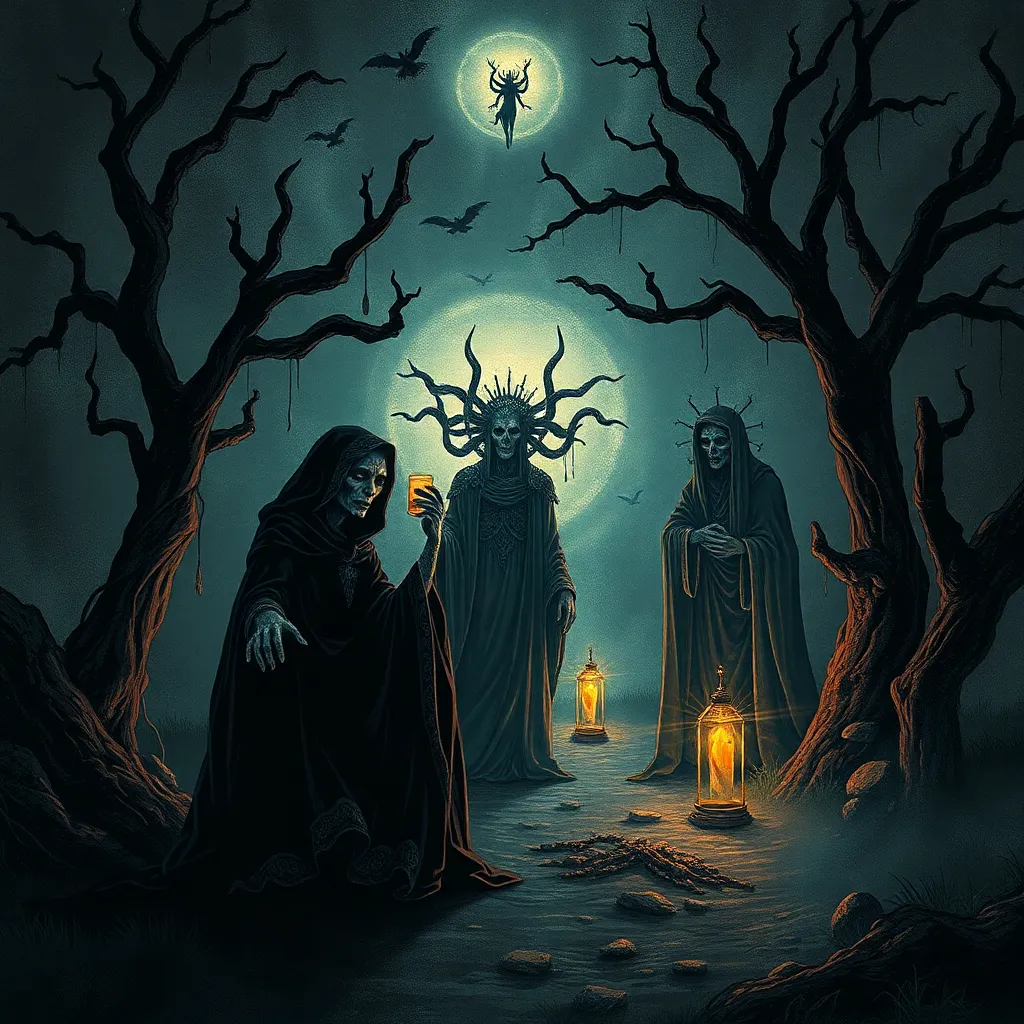The Spirit of the Forest: Exploring the Legends of the Japanese Forest Spirit, Yamawaro
I. Introduction
The figure of Yamawaro stands as a captivating embodiment of the forest spirit in Japanese mythology. Revered in rural traditions, Yamawaro signifies the deep-rooted connection between humans and nature, illustrating the vital role that nature plays in Japanese folklore. This article aims to delve into the legends surrounding Yamawaro, exploring its origins, characteristics, and the cultural significance it holds in both historical and contemporary contexts.
II. Origins of Yamawaro
The history of forest spirits in Japan is rich and varied, with Yamawaro being one of the most prominent figures. Traditionally, forest spirits were believed to inhabit the dense woodlands, serving as guardians of the natural world.
The etymology of the term “Yamawaro” can be traced back to the Japanese words “yama,” meaning mountain, and “waro,” which can signify a child or spirit. This etymology reflects Yamawaro’s nature as a being closely tied to mountainous regions.
In rural communities, Yamawaro was often viewed as a protector of the forest, embodying the spirit of the wild and the wisdom of nature. Local beliefs asserted that Yamawaro could bring fortune to those who respected the forest and its inhabitants.
III. Characteristics of Yamawaro
Yamawaro is often depicted with distinct physical characteristics that vary across different regions of Japan. Typically, it is described as a small, humanoid figure, sometimes covered in moss or leaves, blending seamlessly into its forest surroundings.
- Physical Description: Yamawaro is usually portrayed as being child-like in stature, often with features reminiscent of various forest elements.
- Personality Traits: Yamawaro is known for its playful yet elusive nature, often engaging in mischief while also displaying a protective demeanor towards the forest and its creatures.
In terms of its role in the ecosystem, Yamawaro symbolizes the balance and interdependence of all living things, highlighting the importance of respecting nature’s rhythms and cycles.
IV. Yamawaro in Folklore and Stories
Numerous legends and tales highlight the significance of Yamawaro in Japanese folklore. One famous story tells of a traveler who, lost in the forest, encounters Yamawaro, who guides him back to safety in exchange for a promise to respect the forest.
Regional variations of Yamawaro stories abound, each adding unique local flavors to the tales. For instance, some areas celebrate Yamawaro as a seasonal spirit that brings the first blooms of spring, while others recount how it aids farmers during harvest time.
The connection of Yamawaro to seasonal changes underscores its role in agricultural practices, serving as a reminder of the natural cycles that govern rural life.
V. The Cultural Significance of Yamawaro
Yamawaro’s importance transcends mere folklore, representing a profound harmony with nature that resonates through Japanese culture. This connection is evident in various forms of artistic expression, from traditional paintings to contemporary literature.
- Art and Literature: Yamawaro has inspired countless artists and writers, symbolizing the beauty and mystery of the natural world.
- Traditional Crafts: Craftsmen have incorporated Yamawaro motifs into their work, celebrating the spirit’s essence in wood carvings and textiles.
In contemporary Japanese culture, Yamawaro continues to be celebrated, serving as a symbol of environmental stewardship and a reminder of the importance of preserving natural spaces.
VI. Rituals and Beliefs Surrounding Yamawaro
Throughout history, various rituals have been performed to honor or appease Yamawaro. These practices often involve offerings of food or handcrafted items left at the base of trees, symbolizing respect for the spirit and the forest.
Festivals celebrating forest spirits, including Yamawaro, are common in many rural areas, featuring traditional dances, songs, and communal feasts that strengthen community bonds.
Personal anecdotes from locals often recount encounters with Yamawaro, reinforcing the belief in its presence. Many share stories of finding unexpected gifts in the forest or feeling a sense of peace and protection while wandering through wooded areas.
VII. Modern Interpretations and Adaptations
In recent years, Yamawaro has found its way into popular media, including anime and films, where it is often depicted as a guardian of nature, reflecting contemporary environmental themes.
The resurgence of interest in forest spirits aligns with global environmental movements, as more individuals seek to reconnect with nature and advocate for its preservation. Yamawaro serves as a potent symbol of this movement, highlighting the importance of respecting and caring for the environment.
Reimagining Yamawaro in a contemporary context allows for a dialogue between past beliefs and modern environmental concerns, fostering a deeper appreciation for the natural world.
VIII. Conclusion
Yamawaro embodies the spirit of the forest and holds significant cultural importance in Japan. Its legends and characteristics offer insights into the values of harmony with nature that permeate Japanese society. As we navigate the complexities of the modern world, the legacy of forest spirits like Yamawaro serves as a reminder of the enduring connections between humanity and nature.
The stories and rituals surrounding Yamawaro not only enrich Japanese folklore but also encourage a collective responsibility to preserve both cultural heritage and the natural environment. In doing so, we honor the spirit of Yamawaro and the timeless lessons it imparts.



